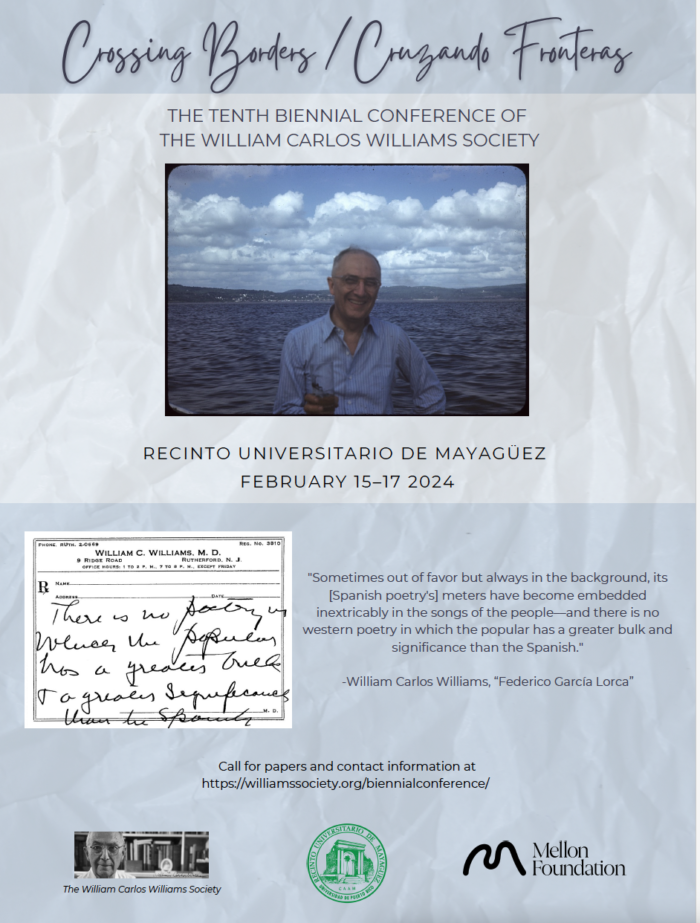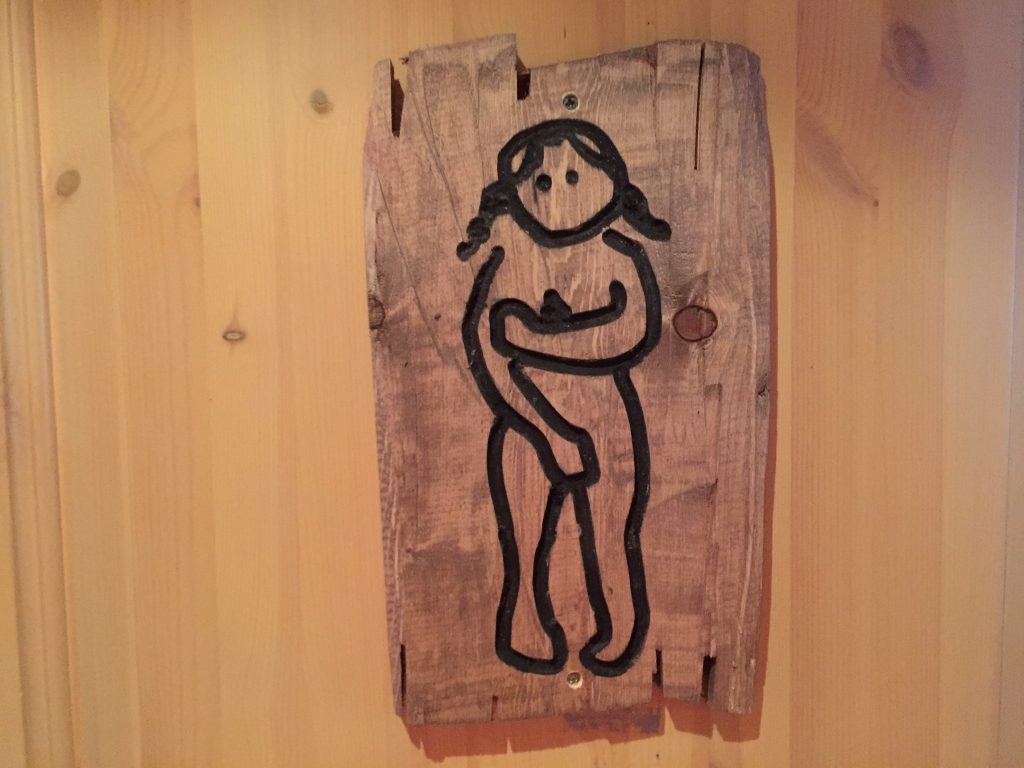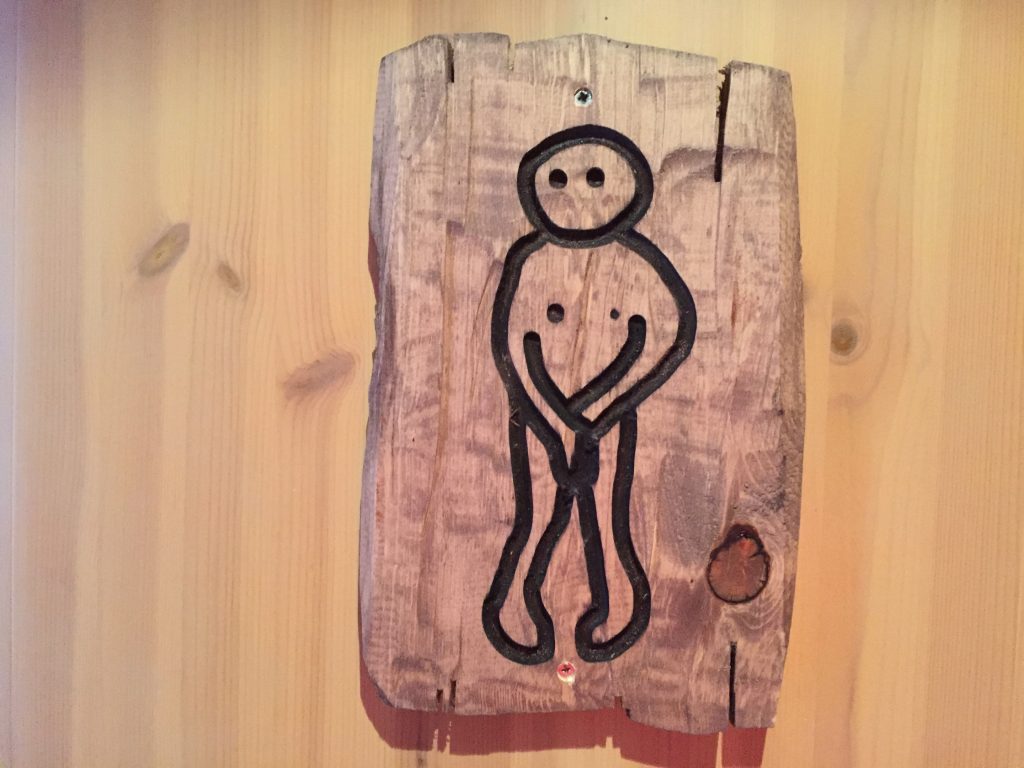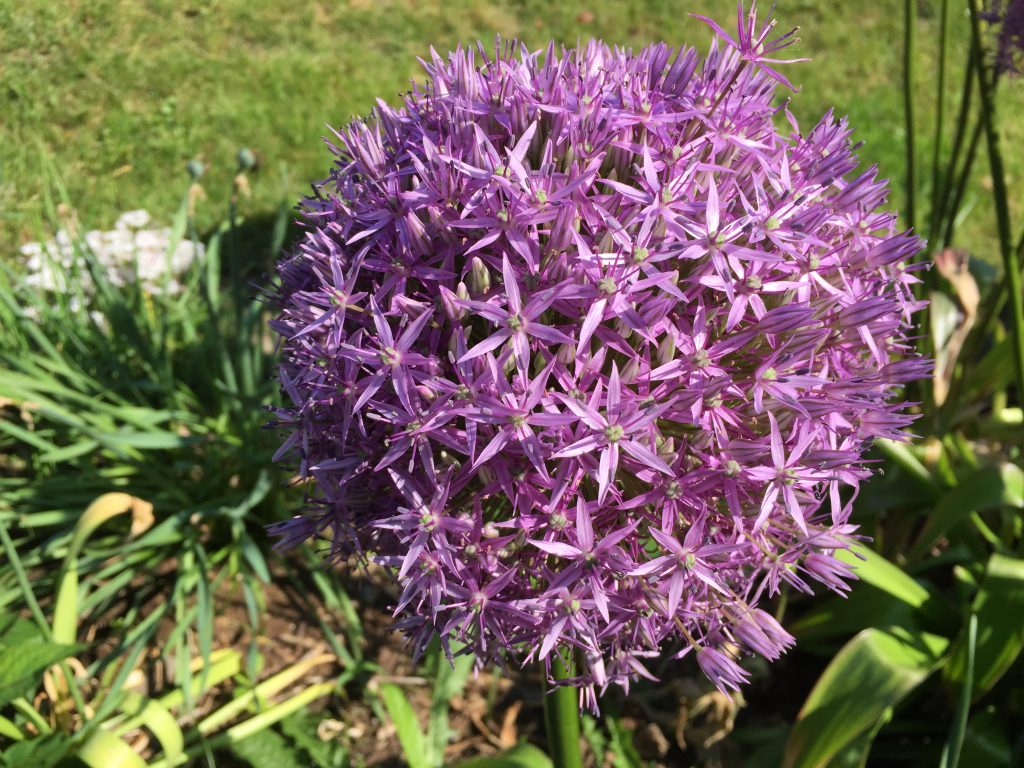Tending to the Imagination: Perspective and Incongruity in William Carlos Williams and Kenneth Burke
This talk is a process piece that appears on the Journal of the Kenneth Burke Society web page. I am including the presentation here to make visible (and to archive) the intellectual process that contributed to the 1997 essay I published in the William Carlos Williams Review, “‘no confusion—only difficulties’: William Carlos Williams’s Poetics of Apposition.” In addition, the argument about apposition in this talk is cited and discussed by Karen M. Cardazo in her article “Essaying Democracy: The Post/Modern Intertexts of Kingston, Rodriguez, and Williams” in the William Carlos Williams Review 27.1 (Spring 2007).
Mark C. Long
Presented at the Modern Language Association Conference
Toronto, December 1997
My purpose is to compare an approach to interpretation shared by Kenneth Burke and William Carlos Williams. The approach seeks an alternative to reductive oppositional strategies that are, as Burke puts it, “so ably suited to convincing the convinced, and so thoroughly unsuited to anything else” (qtd. in Crusius 358). I begin with Burke’s hypothesis that there are no descriptions of “reality” independent of perspective. Next, I focus on Burke’s diagnosis of commonplace “solutions” to relativism and pluralism and his alternative strategy of “perspective by incongruity.” I then draw on Williams to extend Burke’s insight that oppositional strategies limit the mind’s capacity to explore a wider range of interpretive choices when establishing a particular set of relations with the external world. My particular interest is what I have come to call Williams’s creative principle of apposition, an interpretive strategy that provides a means of modifying and enlarging viewpoints that would otherwise be determined by the less supple oppositional strategies Burke critiques.
I
In Permanence and Change Burke observes that the universe “would appear to be something like a cheese; it can be sliced in an infinite number of ways–and when one has found his pattern of slicing, he finds that other men’s slices fall in the wrong places” (103). I take Burke’s first point to be that the possibility of infinite slicing patterns is a felicitous condition for the human tendency to hit upon serviceable patterns of slicing. On the assumption that the purpose of our verbal acts is to effect “practical simplifications” of “reality,” Burke argues that these simplifications are the product of linguistic associations that are prior to our observations; he demonstrates, further, how these “conclusions” are built into our daily practices–how they actively determine the selection and organization of data which constitute our observations. Anticipating Kuhn’s insight into the ways patterns of inquiry determine relevant questions and problems, Burke concludes, “Not only does the nature of our terms effect the nature of our observations . . . but many of the ‘observations’ are but implications of the particular terminology in terms of which the observations are made–so that much of what we presume to be observations about the world may be no more than the spinning out of possibilities implicit in our particular choice of terms” (PC 46)
Permanence and Change examines not just how well our hermeneutic frames provide us with terms for ordering our world but how well these frames of acceptance can be extended to new situations. “Language,” Burke explains, “is implicitly analogical inasmuch as we constantly apply the same terms to many different situations whereas no two situations are the same in detail” (Pre/Text 333). The impulse to extend one’s classifications into new regions of inference is carried out by hitting upon “analogical extensions, or linguistic inventions, not sanctioned by the previous usages of [one’s] group” (PC 103). Thus we have no choice but to “over-simplify a given event when we characterize it from the standpoint of a given interest–and we attempt to invent a similar characterization for other events by analogy” (107).
I take Burke’s second point to be that serviceable patterns of slicing lead to missing other available patterns and to ruling out the efficacy of these alternative patterns.1 The problem is that workable explanations obtain the utmost importance in a world in which, Burke explains, “Certainties will arise, impelling men to new intolerances” (CS 113). It follows that “any terminology is suspect to the extent that it does not allow the progressive criticism of itself” (ROR303). Indeed, any argument by analogy is highly susceptible to error when “a similarity is taken as evidence of an identity‘” (97). Burke calls on Thorstein Veblen’s term “trained incapacity” to suggest a central mechanism for our interpretive errors–for although our associations with the word training “naturally suggest capacity rather than incapacity” there are good reasons to think otherwise (91). In other words, if one adopts measures in keeping with one’s experiences and training, then “the very soundness of this training may lead [one] to adopt the wrong measures” (10). Or as Burke aphoristically puts it, “People may be unfitted by being fit in an unfit fitness.”
The analytical technique “perspective by incongruity” is Burke’s term for the attempt to transform the limits of trained incapacities into a virtue–of making a way of not seeing into a way of seeing. Burke develops the term “perspective by incongruity” in reference to the stylistic principle of Nietzsche that invokes metaphor to stress “a kind of vision got by seeing one order in terms of another” (CS 216). Burke adds that although Nietzsche exemplified the procedure, it was Bergson who came nearest to making incongruity a system by proposing to deliberately cultivate contradictory concepts (PC 94). In brief, a perspective by incongruity is a “deliberate misfit”; it “appeals by exemplifying relationships between objects which our customary rational vocabulary has ignored” (90).
The difficulty we might have accepting the concept perspective by incongruity is our habit of listening to the universe and awaiting what it will prove to us. We compound this problem, Burke adds, as “we have psychotically made the corresponding readjustment of assuming that the universe itself will abide by our rules of discussion and give us its revelations in a cogent manner” (99).2 Burke’s explication of (and antidote to) this form of psychosis is worth considering. When the primordial impulse to believe that our relation to the world is (or should be) one of knowing comes into conflict with the recalcitrance of that which we presume to know3 we habitually seek refuge in the idea that our knowledge is certain. Burke argues that we need to abandon this habit. However, there are three interpretive strategies (or frames) that all too easily prevent us from doing so. The first strategy–the absolutist or polemical frame–rejects or rules out certain positions to support its own defense of the correct or true position; the second strategy, the euphemistic frame, seeks to cure material problems by proffering a supernatural scheme that “hides or covers up or misnames the real ills of life in society and promises a better life in the next world” (Rueckert 118); the third strategy, the debunking frame, as Burke explains, “discerns an evil. [It] wants to eradicate this evil. And [it] wants to do a thorough job of it. Hence, in order to be sure [it] is thorough enough, [it] becomes too thorough” (Philosophy 147).
Working within a closed system, each strategy eliminates possibilities, “whether the doctrine is religious, political, ethnic, or philosophical” (Rueckert 119). William Rueckert has reminded us that the debunker and polemicist have always been Burke’s real enemies “because the first simply destroys without offering constructive or creative alternatives; and the second tends to eliminate freedom of thought and action” (119). My interest in Burke’s insight into the limits of the euphemistic, polemical and debunking frames is his conclusion that we must do more than simply acknowledge relativism: “We must erect coordinates atop it, not beneath it” (ATH 229). Such Burkean coordinates would acknowledge that “relativism cannot be eliminated by the simple legislative decrees of secular prayer (as when one tries to exorcise it by verbally denying its presence)” (229). The coordinates would “make one at home in the complexities of relativism, whereas one now tends to be bewildered by relativism” (ATH 229).
II
The conceptual migration from bewilderment to feeling at home in the face of the relativism of thought and perception is predicated of abandoning the assumption that a failure to establish for certain a knowing of the world is a failure of knowledge.4 By way of transition, let me suggest that the philosopher in Burke and the poet in Williams agree that we necessarily limit our freedom of perceptual and cognitive association by invoking a rigid conceptual framework, problem, or set of questions; let me suggest, too, that Burke and Williams help us to see the ways ready-made conceptual contrasts repeat a structural cycle of establishing authority through conflict; and let me suggest, finally, that both Burke and Williams reject a form of criticism that merely seeks to confirm its pre-existing structure.5
Williams’s principle of apposition constructs a generative alternative to the cyclical struggle of dominance and negation endemic to the ideology of opposition. He suggests , further, that if we do not limit our inquiries to the skeptical hypothesis of indeterminacy and inexplicability, then we can more effectively resist the conceptual habits which enforce limits on the imagination, on thinking, and thus on our continuing efforts to come to terms with the world. Thus Williams sees the project of poetry and poetics as not seeking answers or truths or consensus but rather as a way of modifying and enlarging viewpoints to these possible ends.
Williams first articulates the principle of apposition in Spring and All. His general argument is that habitual formulations of thought and static forms of knowledge merely project themselves on reality–using it, appropriating it, opposing it. Williams rejects the quest for immediate contact with the world by insisting that our relations with nature are mediate rather than immediate. This distinction is exemplified in a deceptive passage from Williams’s Spring and All.
Nature is the hint to composition not because it is familiar to us and therefore the terms we apply to it have a least common denominator quality which gives them currency–but because it possesses the quality of independent existence, of reality which we feel in ourselves. It is not opposed to art butapposed to it.” (I 121; my emphasis)
The “quality of independent existence” repeats Williams’s contention earlier in Spring and All that there is “a constant barrier between the reader and his consciousness of his immediate contact with the world” (88). “Such a realization,” Williams goes on to insist “shows us the falseness of attempting to ‘copy’ nature” (I 107). He underscores “the falseness of attempting to copy nature” in a later letter to John Thirwall, in which he writes “The first thing you learn when you begin to learn anything about this earth is that you are eternally barred save the report of your senses from knowing anything about it” (SL 330). It follows that any attempt to “recover immediacy” (the “reality which we feel in ourselves”) will be no more or less than a “covering over,” another fixed or inert truth claim–or, in Williams’s words, another “dangerous lie.” Williams concludes, “Measure serves for us as the key: we can measure between objects, therefore, we know that they exist” (SL 330).
It is important to italicize the terms opposed and apposed for the distinction is exemplified in Williams’s later works. In each of these instances Williams points out that any alternative to interpretive positions which seek to control and dominate a field of inquiry must necessarily guide us to consider not only the adequacies but the inadequacies of our past and present measures of self and world. One such field of inquiry in Williams is historiography. In the American Grain is driven by the desire that we can reestablish a “ground” by breaking through “a dead layer” to see a “strange New World.” On the one hand, the inquirer must “have the feet of his understanding on the ground, his ground, the ground, the only ground that he knows, which is under his feet. . . . This want, in America, can only be filled by knowledge, a poetic knowledge, of that ground” (213).6There is no question that the ground will be established; only this passage suggests the difficulty of reconstructing history given the “dead layers” of accepted readings.
The apposite strategy is especially evident in In the American Grain. Recall that Williams begins with the observation that the material ground of history has become , under successive interpretations, “nameless under an old misappellation” (v).7 Williams then challenges the received versions of America: “History, history! We fools, what do we know or care? History begins for us with murder and enslavement, not with discovery” (IAG 39). Finally, he points to the interpretive paradox of reading history.
What can we do? Facts remain but what is the truth? We can begin by saying: No opinion can be trusted; even the fact may be nothing but a printer’s error; but if a verdict be unanimous, it is sure to be a wrong one, a crude rush of the herd which has carried its object before it like a helpless condoning image. If we cannot make a man live again when he is gone, it is boorish to imprison him dead within some narrow definition, when, were he in his shoes before us, we could not do it. It’s lies, such history, and dangerous. Just there may lie our one hope for the future, beneath that stone of prejudice. (190)
With the words “just there” Williams suggests why there is no valid reason to say that we cannot know something, despite the difficulties of being certain about such knowledge in any particular case. This theoretical insights may be modest; but it cautions us against, in the words of Wlad Godzich, the ideological moment of the understanding: “The danger for the understanding is not so much the error of fact that methodologists are so concerned with, but with the isolation of thoughts and ideas and their conversion into autonomous objects of knowledge independent of their productive ground” (156). Indeed, it is at this moment of reification, Williams insists throughout Spring and All, that we lose the “productive ground”–that the “no” obscures “the common thing which is anonymously about us” (I 101).
The principle of apposition is evident in the essay “The American Background” as well. The essay is essentially concerned with the “the new spectacle and new conditions” experienced by those who sought to make a new culture in America. Here is how Williams describes the scene:
They found that they had not only left England but that they had arrived somewhere else: at a place whose pressing reality demanded not only a tremendous bodily devotion but as well, the more importunately, great powers of adaptability, a complete reconstruction of their most intimate cultural make-up, to accord with the new conditions. The most hesitated and turned back in their hearts at the first glance. (SE 134)
Here Williams recounts how difficult it is to enumerate a relation to new conditions. Many of the immigrants from England, Williams explains, had no ability to access what they “had never in their lives encountered.” Strange and difficult, “the new continent induced a torsion in the spirits of the new settlers, tearing them between the old and the new” (134). One tendency was to look back to Europe, to confirm old frames of reference; the other tendency was to look forward, to make new ones.
The polarity between the old and the new was in no way satisfactory for the colonists. The residual primary culture produced the “exorbitant excesses” and “colossal appetite” of the colonial ascendancy. Williams writes, “Incredible, fairy-tale-like, even offensively perverse as it may seem, it is the fear, the cowardice, the inability before the new, which in America whipped the destructive false current on like a forest fire” (SE 152). As a consequence of such “fear” and “cowardice,” the ascendancy of the secondary culture “secure in wealth, was gained not without results that were ludicrous as well as tragic.” But the opposition between the old and the new also suggests something deeper , “a relation to the immediate conditions of the matter in hand, and a determination to assert them in opposition to all intermediate authority” (143).8 Thus Williams at once dramatizes the assertive power of determination or conviction to oppose “all intermediate authority” at the same time he reserves “a relation to the immediate conditions” as the prior condition–the apposite condition–from which “to appraise the real through the maze of cut-off and imposed culture from Europe.”
III
In the larger project from which this essay is drawn, the concept of apposition links Williams’s poetics with his commitment to poetry as a specific form of cultural practice. In each of the examples I have given, the function of apposition can be understood in the grammatical sense of placing one substantive alongside another substantive–that is, to attribute or to complement something. Similarly, in its rhetorical sense, apposition adds a parallel word or expression by way of description, explanation, or illustration. In the broader domain of cultural practices Williams helps us to see how conceptual and interpretive strategies that depend upon opposition are conditioned to replace one version of cultural homogeneity with another.
Thus Williams cautions that oppositional critique of “history” or “culture” is too often rooted in not simply the desire for certainty but the dangerous assumption that we are already competent to understand the ground words such as history and culture represent. And Williams is well aware how such assumptions are more likely than not to lead to successive attempts to authorize a version of the past at the expense of some other version. On the contrary, Williams’s strategy ofapposition invites discontinuity and transformation, revision and reconstruction. The reorientation from the indeterminacy of reality to the partiality of our determinate judgments about that reality is the precondition for the strategy of apposition–a deconstructive and reconstructive moment of grounding the “truth” or “reality” on which “new” historical and cultural judgments are made.
The apposite stance leaves room for the power of the imagination to lead us to other ways of going on, rather than simply calling existing interpretations into question. Insisting on an alternative to critical discourses that seek to control and dominate a field of inquiry, then, Williams provides a method of considering more fully the adequacies and inadequacies of our past and present measures of self and world. The creative principle of apposition encourages a provisional interpretive position more open to possible reconfigurations of experience; and because it requires a course of inquiry into the consequences of the hypothetical situation that it suggestsmight be, apposition provides a potentially wider range of possible problems or questions to emerge prior to the deduction that something must be.
My case is that the apposite stance provides an interpretive strategy that abandons the desire for immediate contact for the more difficult task of constructing mediate relations. Hence Williams will say that “the new and the real, hard to come at, are synonymous” (143). Of course Williams, with Burke, is well aware of the difficulties people will have accepting such an interpretive strategy, as “the tendency of the race [is] to resist change violently” (143). As Williams reminds us, the conservative tendency of the mind is equivalent to the atrophy of the mind’s imaginative potential, as the mind is “lost in the confusion” which surrounds us and confines us to our predictable (as well as predictive) measures of the world. “So what can we do but retreat to some ‘standard’ which we have known in the past and say to ourselves, Beyond this standard you shall not go!” (SL 330-31).
Williams, with Burke, insists on a model of inquiry that is provisional, improvisational, resolutely hypothetical. Thomas Whitaker has shown us how history becomes less a result than a process in Williams’s poetics, less a will to completion than a continuing desire to reform the self and its relation to its historical ground (79). Burke and Williams make a similar case for methods in the arts and cultural criticism: our methods must not be ready-made, but rather we must be ready to remake our most enabling convictions and commitments. In a formulation that may at first appear counterintuitive, then, the continuity of method—by definition a way, or path of transit—is maintained by reducing the absolute to the contingent, the systematic to the messy aggregate of human knowledge. The logic of apposition is thus rooted in the incentive to return—to reread, to reinterpret—and to thereby reintegrate the self in our poetic restagings of history.
Notes
1. Attitudes Toward History extends this second point to the comic frame of acceptance and the necessary lesson of humility (41). If every person is “necessarily mistaken,” Burke asks, there is reason to believe not only that “all people are exposed to situations in which they must act as fools” but that “every insight contains its own special type of blindness” (41). Burke rephrases the point in his 1965 essay “Terministic Screens”: “if any given terminology is a reflection of reality, by its very nature it must be a selection of reality; and to this extent it must also serve as adeflection of reality” (Language 45).
2. The psychosis of the “culture wars” during the 1980s is the most immediate example of the kind of rhetorical drama produced when the assumptions underlying a term like relativism is given more than a passing look.
3. For an insightful summary of this problem, particularly in reference to Kant, see Stanley Cavell,The Senses of Walden. New York: Viking, 1972. For Cavell, the answer “does not consist in denying the conclusion of skepticism but in reconceiving its truth” (133).
4. But because systems of orientation do function according to Burke’s principle of entelechy the heuristic value of “depriving yourself of familiarity,” or of adopting a planned incongruity, must be “inclusive of error” (ATH 121-22). For “in periods of firmly established meanings, one does not study them, one uses them: one frames his acts in accordance with them” (162). But an interpretation can be wrong because the very concept of point of view introduces the possibility of error; and wherever there is the possibility of a wrong interpretation there is also the possibility of a right one: “the freedom to err argues a freedom to be right” (257).
5. My reading of Burke is deliberately in dissent from Burke’s enlistment by Frank Lentricchia in his 1982 book Criticism and Social Change. In fact I would like to begin extricating Burke from Lentricchia’s frame by urging you to consider the way William Carlos Williams shows us the problems with Lentricchia’s oppositonal criticism. Lentricchia argues that criticism is not only the production of power but that the literary intellectual should embrace the political work of social change (11). Lentricchia’s provocation, however, in retrospect, deserves close attention, especially his assumption that the intellectual has at his or her disposal “an intimate understanding of the mechanisms of culture” (7). So much so, that Lentricchia exclaims, “We know how culture works” and “we know, or should know, that culture does do work.” One can readily explain this rhetorical claim by situating it historically, in the early 1980s, and contextually, in a department of literature. But to use Burke to support such a project is to eviscerate Burke’s project of its greatest strength. Of course we can begin by agreeing with Lentricchia: oppositional criticism is functional; in fact, a closer reading of the implications of Lentricchia’s book demonstrate the way the oppositional frame is too functional, as it limits criticism to the distinct possibilities (it is political) of a situation rather than the indistinct possibilities to which Burke was ever attuned. In brief, to say that culture is self-evident one must assume that one is always already competent to understand it–an assumption that is “both theoretically false and usually ethnocentric” (Berlant 7).
6. Williams does not accept the metaphysical position that there must be an incognizable reality. Williams does, however, accept the possibility of the real. Hilary Putnam points out that such a philosophical position is “not a view in which the mind makes up the world (or makes it up subject to constraints imposed by ‘methodological canons’ and mind-independent ‘sense-data’). If one must use metaphorical language, then let the metaphor be this: the mind and the world jointly make up the mind and the world.” Hilary Putnam, The Many Faces of Realism (LaSalle: Open Court,1987), 1.
7. For the most developed consideration of the distinctive historiographical significance of In the American Grain, see Bryce Conrad, Refiguring America: A Study of William Carlos Williams’s In the American Grain (Urbana: U of Illinois P, 1990). An excellent account of Williams’s method for literary and cultural theory is found in Vera M. Kutzinski, Against the American Grain: Myth and History in William Carlos Williams, Jay Wright, and Nicolas Guillen (Baltimore: Johns Hopkins UP,1987). For Kutzinski, these three authors offer experiments “in disorder that ultimately reveal a kinship much more significant than the genealogies they destroy: an order, and idea of order, that is based on the knowledge that, no matter what our ethnic or national origins, we are all, as Octavio Paz put it, ‘living on the margin because there is no longer any center’” (qtd. in Kutzinski 248).
8. These remarks on the distinctive necessity of an apposite strategy are consistent with the logic of apposition Williams articulated nearly ten years earlier in In the American Grain. Williams summarizes his thesis concerning the difficulties of America’s settlement at the outset of the essay: “Thus two cultural elements were left battling for supremacy, one looking toward Europe, necessitous but retrograde in its tendency–though not wholly so by any means–and the other forward-looking but under a shadow from the first. They constituted two great bands of effort, which it would take a Titan to bring together and weld into one again. Throughout the present chapter, the terms native and borrowed, related and unrelated, primary and secondary, will be used interchangeably to designate these two opposed split-offs from the cultural force, and occasionally, in the same vein, true and false” (SE I35).
Works Cited
Berlant, Lauren. “Collegiality, Crisis, and Cultural Studies.” ADE Bulletin 117 (Fall 1997): 4-9.
Burke, Kenneth. Attitudes Toward History. Third ed. Berkeley: U of California P, 1984.
—. Counter-Statement. Berkeley: U of California P, 1968.
—. “In Haste.” Pre/Text 6.3-4 (1985): 329-77.
—. Language as Symbolic Action: Essays on Life, Literature, and Method. Berkeley: U of California P,1968.
—. Permanence and Change: An Anatomy of Purpose. Third ed. Berkeley: U of California P, 1984.
—. The Philosophy of Literary Form: Studies in Symbolic Action. Berkeley: U of California P, 1973.
—. The Rhetoric of Religion. Berkeley: U of California P,1970.
Cavell, Stanley. The Senses of Walden. New York: Viking,1972.
Conrad, Bryce. Refiguring America: A Study of William Carlos Williams’s In the American Grain. Urbana: U of Illinois P,1990.
Crusius, Timothy. “Kenneth Burke’s Auscultation: A `De-construction’ of Marxist Dialectic and Rhetoric.” Rhetorica 6.4 (Autumn 1988): 355-79.
Godzich, Wlad. The Culture of Literacy. Cambridge: Harvard UP, 1994.
Kutzinski, Vera M. Against the American Grain: Myth and History in William Carlos Williams, Jay Wright, and Nicolas Guillen. Baltimore: Johns Hopkins UP,1987.
Lentricchia, Frank. Criticism and Social Change. Chicago: U of Chicago P, 1983.
Putnam, Hilary. The Many Faces of Realism. LaSalle: Open Court, 1987.
Rueckert, William. Encounters with Kenneth Burke. Chicago: U of Illinois P, 1994.
Thirwall, John C., ed. The Selected Letters of William Carlos Williams. New York: New Directions, 1957.
Whitaker, Thomas R. William Carlos Williams. New York: Twayne, 1968.
Williams, William Carlos. Imaginations. Ed. Webster Schott. New York: New Directions, 1970.
—. In the American Grain. New York: New Directions, 1956.
—. Selected Essays. New York: New Directions, 1969.
—. The Embodiment of Knowledge. Ed. Ron Loewinsohn. New York: New Directions, 1974.











